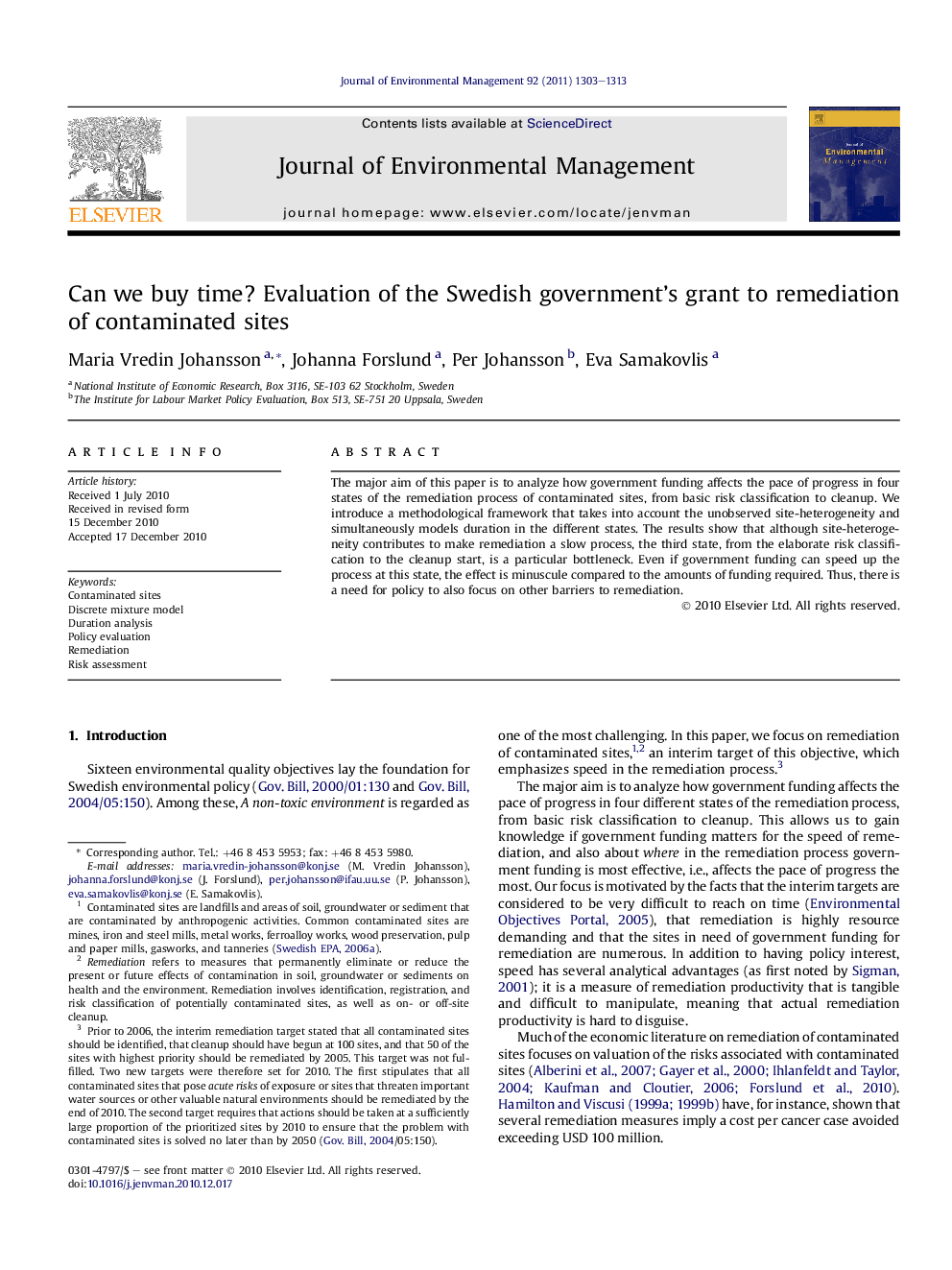| Article ID | Journal | Published Year | Pages | File Type |
|---|---|---|---|---|
| 10505599 | Journal of Environmental Management | 2011 | 11 Pages |
Abstract
The major aim of this paper is to analyze how government funding affects the pace of progress in four states of the remediation process of contaminated sites, from basic risk classification to cleanup. We introduce a methodological framework that takes into account the unobserved site-heterogeneity and simultaneously models duration in the different states. The results show that although site-heterogeneity contributes to make remediation a slow process, the third state, from the elaborate risk classification to the cleanup start, is a particular bottleneck. Even if government funding can speed up the process at this state, the effect is minuscule compared to the amounts of funding required. Thus, there is a need for policy to also focus on other barriers to remediation.
Related Topics
Physical Sciences and Engineering
Energy
Renewable Energy, Sustainability and the Environment
Authors
Maria Vredin Johansson, Johanna Forslund, Per Johansson, Eva Samakovlis,
